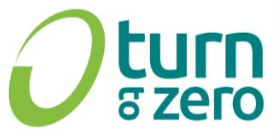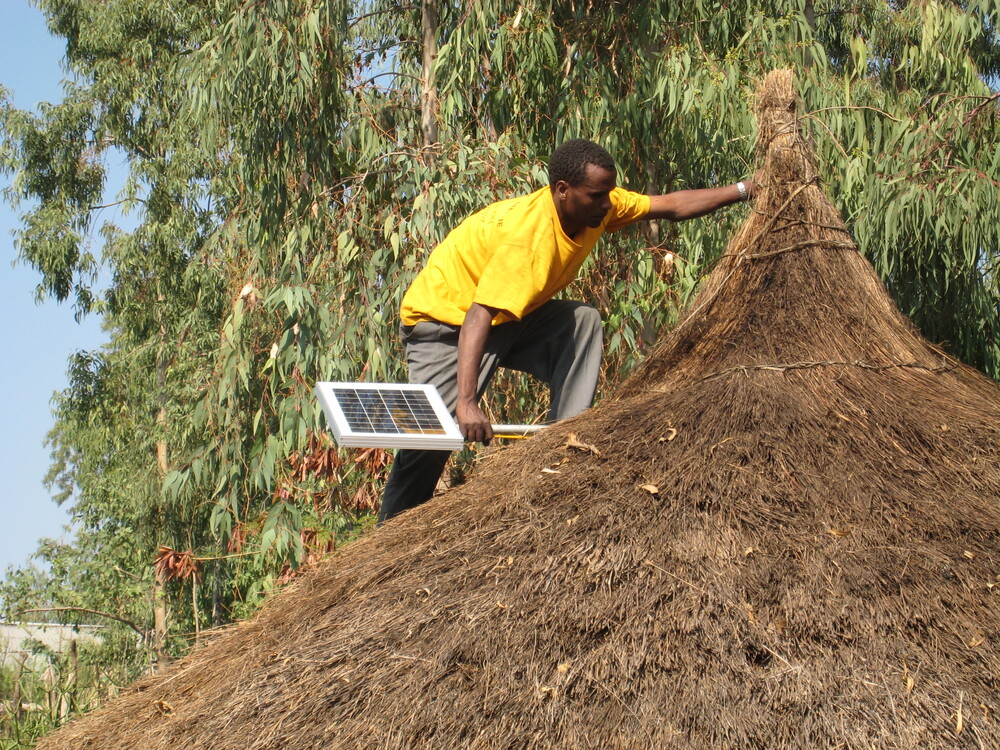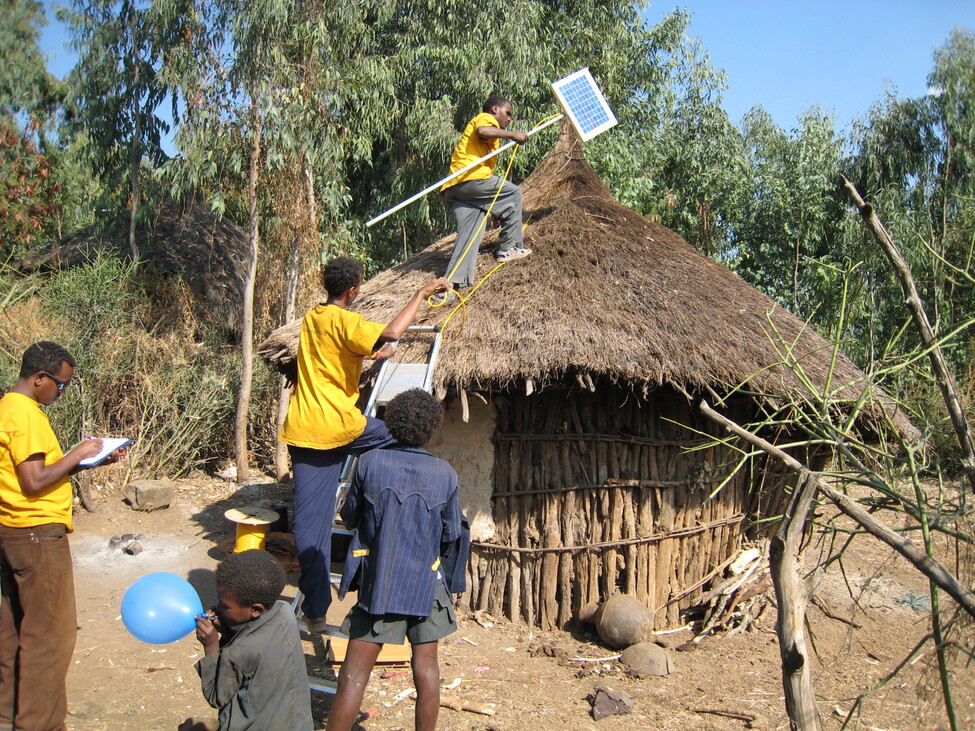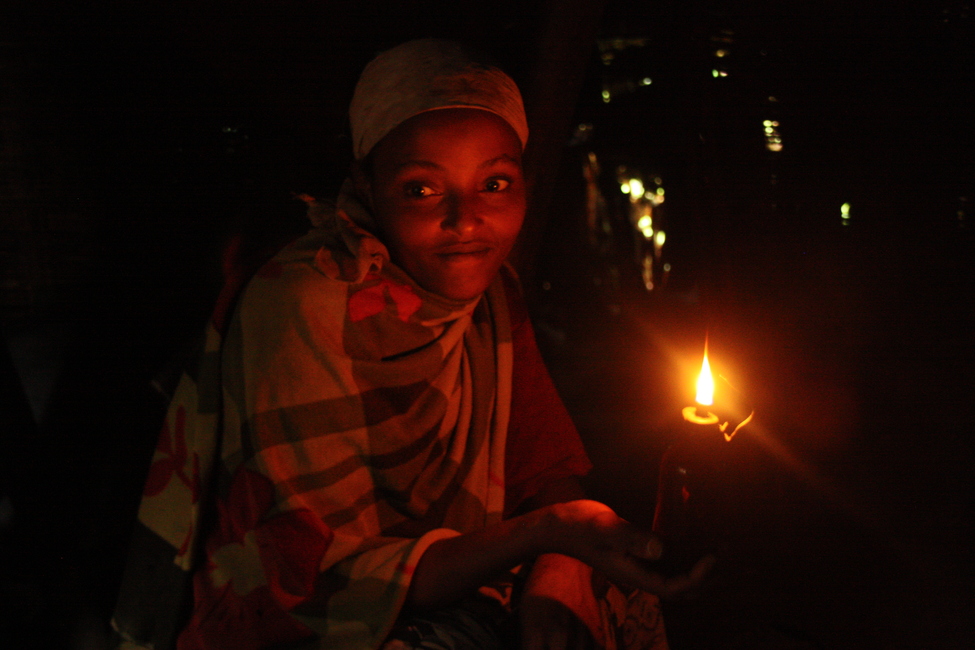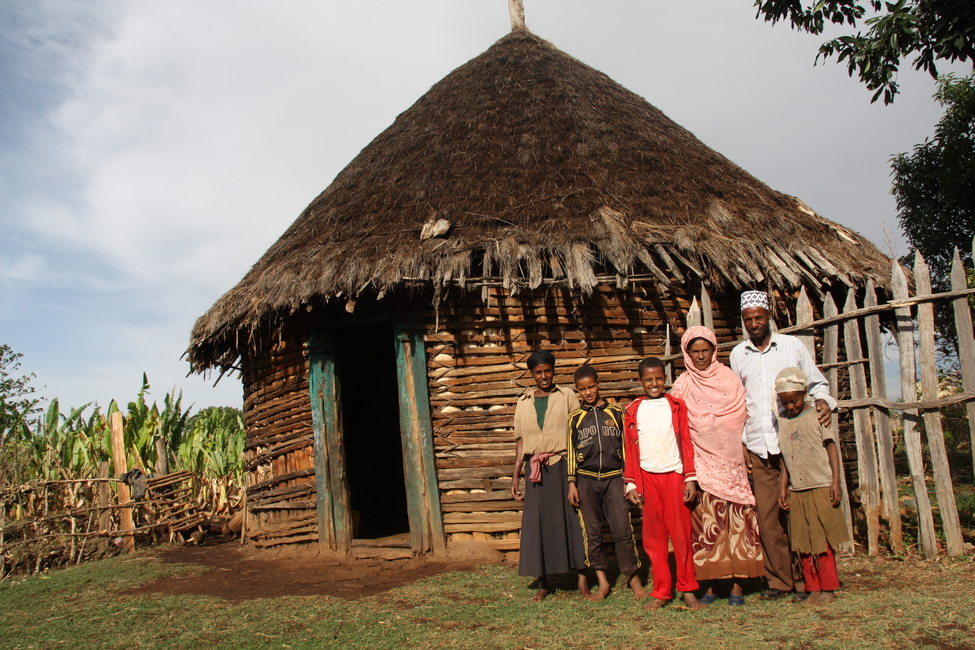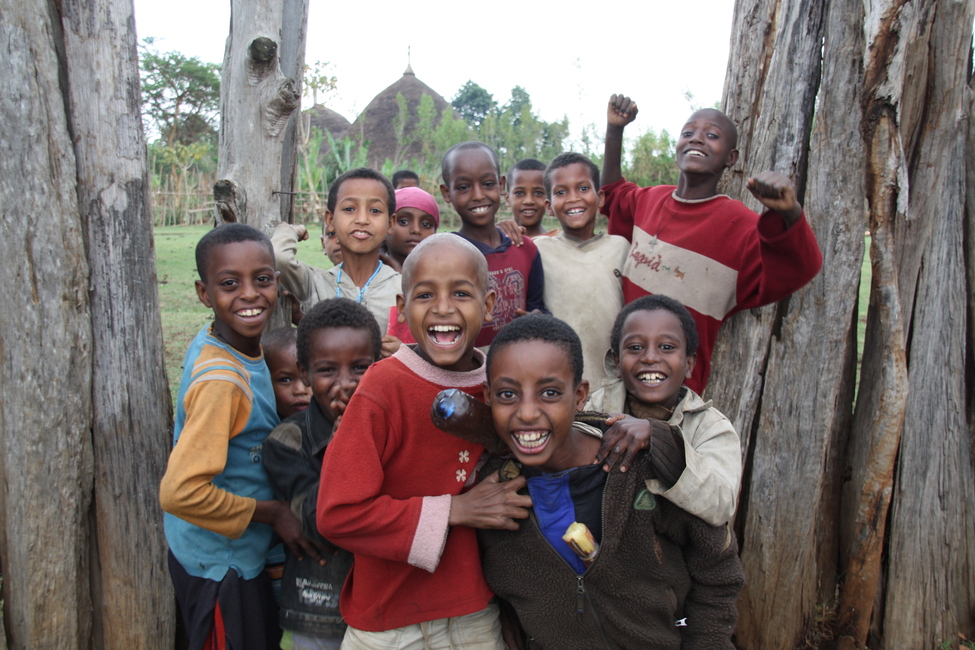Project facts
Project type: Renewable energy
Project location: Ethiopia and Kenya
Project standard: Gold Standard VER
Annual emission reduction: 13.976 t
Project start: May 2010
The installation of photovoltaic cells on the roofs of Ethiopian and Kenyan houses for electricity production gives families access to lighting and improves the livelihoods of people living in the rural regions of Ethiopia and Kenya. The use of solar lighting instead of kerosene lamps has positive effects on people’s health and leads to reductions of greenhouse gas emissions.
